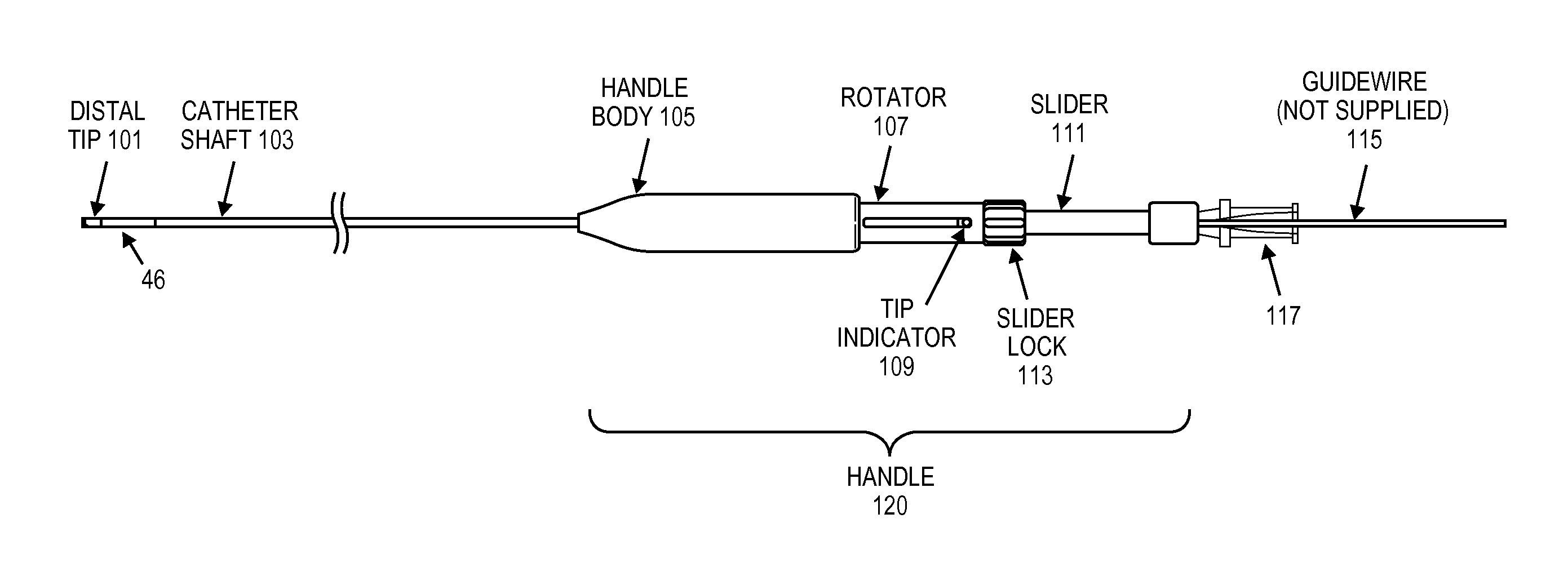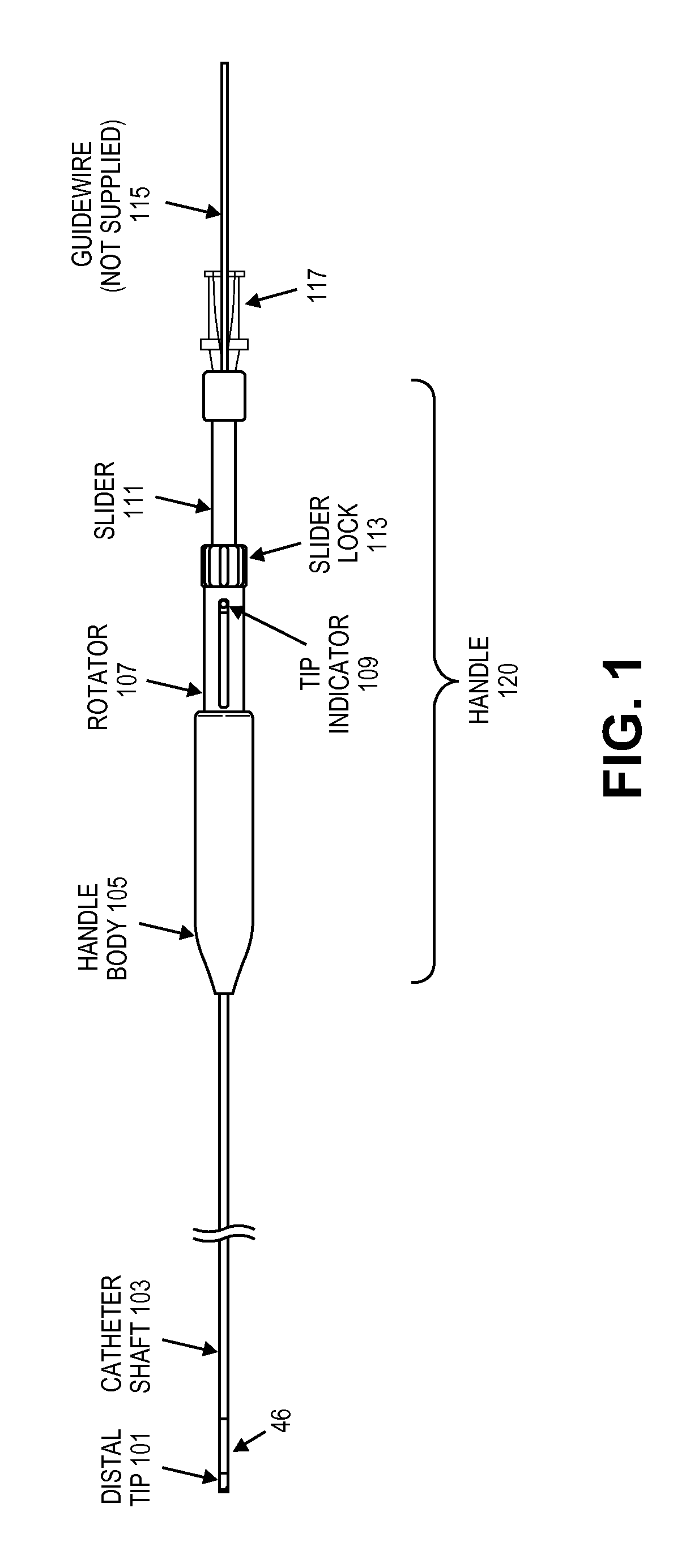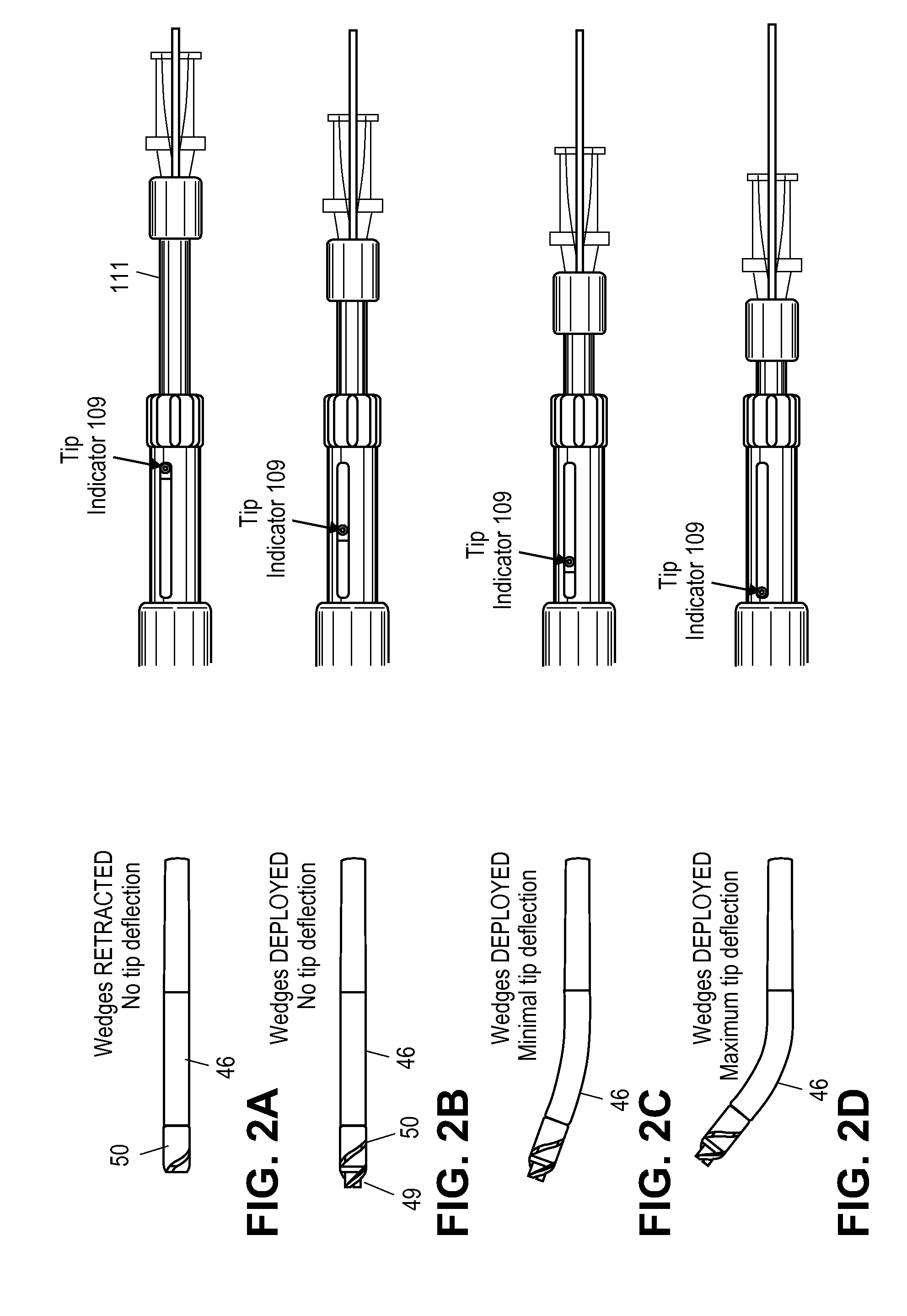Guidewire support catheter
a technology of support catheter and guidewire, which is applied in the field of guidewire placement and support catheter, can solve the problems of affecting the function of the guidewire, debilitating and life-threatening, and other complications, and achieves the effects of preventing damage to the lumen of the vessel, facilitating control, and improving engagemen
- Summary
- Abstract
- Description
- Claims
- Application Information
AI Technical Summary
Benefits of technology
Problems solved by technology
Method used
Image
Examples
Embodiment Construction
[0091]FIG. 1 illustrates one variation of a guidewire positioning and support catheter having a rotatable distal end with extendable / retractable wedges. This device may be used to position (e.g., providing a channel for) a guidewire or for traversing an occlusion in a vessel, particularly for traversing complete occlusions. This device may be used to support steerable guidewires (and may be used to guide them) in accessing discrete regions of the peripheral vasculature. It may be used to facilitate placement and exchange of guidewires and other interventional devices. It may also be used to deliver saline or contrast.
[0092]One example of such a guidewire support catheter is provided below, although other variations are contemplated. In general, these devices include a rotatable distal tip. The distal tip may be rotated manually (by operation of a control on the proximal handle). In some variations both counterclockwise and clockwise rotation is possible. The devices may include one ...
PUM
 Login to View More
Login to View More Abstract
Description
Claims
Application Information
 Login to View More
Login to View More - R&D
- Intellectual Property
- Life Sciences
- Materials
- Tech Scout
- Unparalleled Data Quality
- Higher Quality Content
- 60% Fewer Hallucinations
Browse by: Latest US Patents, China's latest patents, Technical Efficacy Thesaurus, Application Domain, Technology Topic, Popular Technical Reports.
© 2025 PatSnap. All rights reserved.Legal|Privacy policy|Modern Slavery Act Transparency Statement|Sitemap|About US| Contact US: help@patsnap.com



